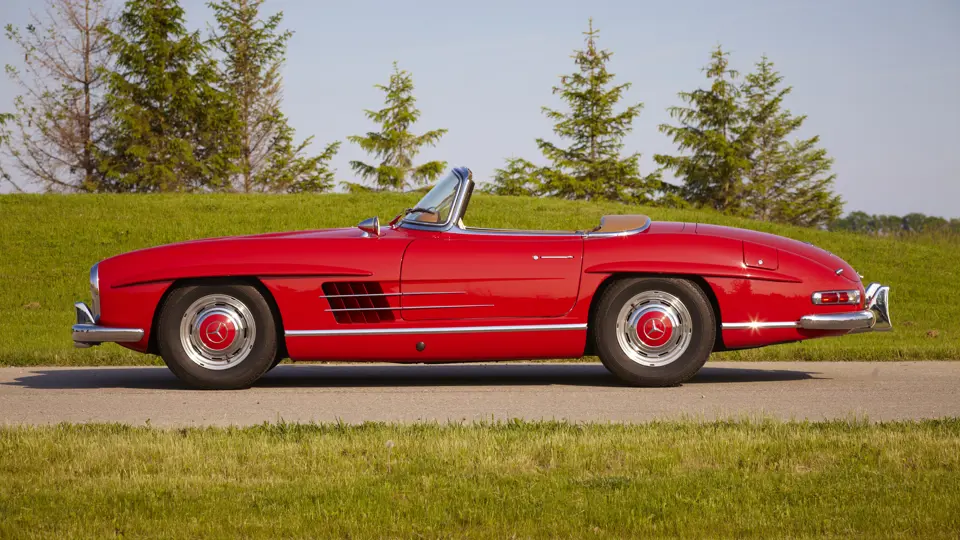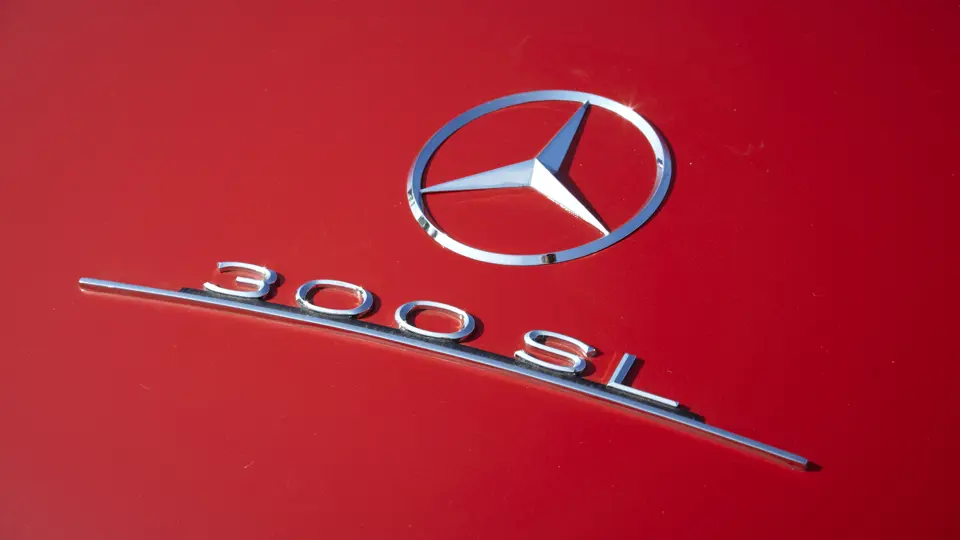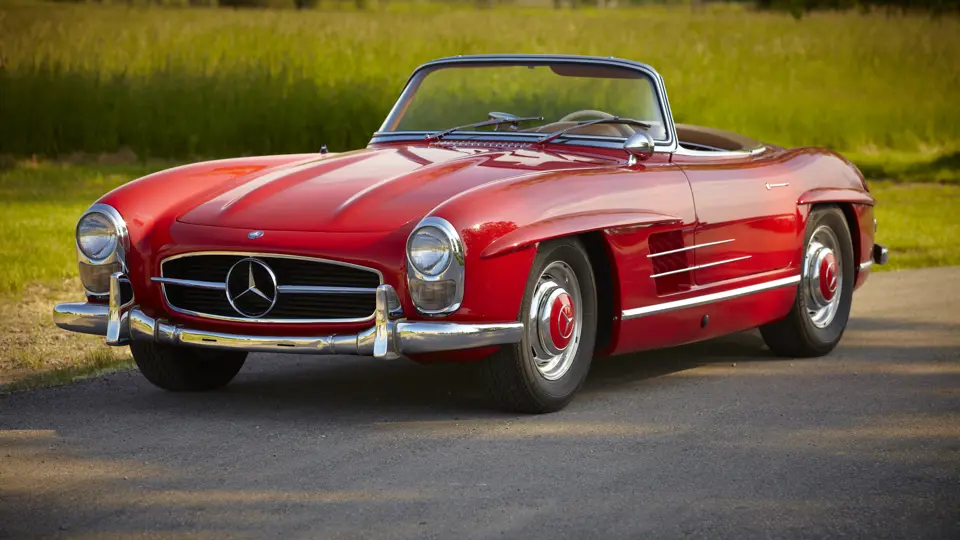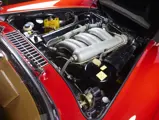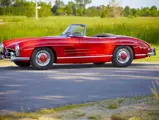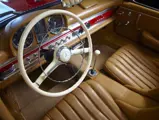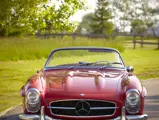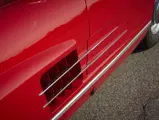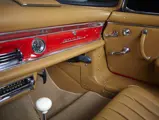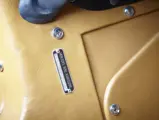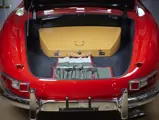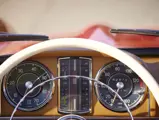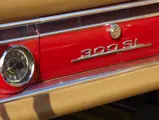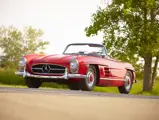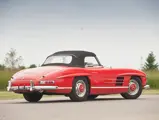225 bhp (DIN), 240 bhp (SAE), 2,996 cc overhead-cam inline six-cylinder engine, Bosch mechanical fuel-injection, four-speed manual gearbox, independent front suspension with upper and lower A-arms and coil springs, independent rear suspension with coil springs and swing axles, and four-wheel hydraulic disc brakes. Wheelbase: 94.5"
- Matching-numbers engine; documented in the 300SL Roadster Register
- Recently serviced by RM Auto Restoration
- Rare disc brake example
Although racing efforts initially languished at Mercedes after the war, within five years a new competition car was developed, using many parts from the road-going 300-series models. The engine was given three carburetors and a new camshaft, and breathing was improved. To accommodate a low body, the engine was canted 45 degrees to the right. Transmission and axles came from the production 300, but the chassis and body were all new. Designed mainly by chief engineer Rudolf Uhlenhaut, the car was built on a tubular space frame and clothed in aluminum. The configuration of the space frame prevented low sills, so hallmark gull-wing doors, pivoting upward, were adopted in place of a conventional forward-hinged arrangement.
Christened “300SL,” for Sport-Leicht (Sports-Light), a team of cars was entered in the 1952 Mille Miglia, where they finished second and fourth. This promising result was followed by a 1-2-3 sweep in the Bern Grand Prix and, just six weeks later, first and second at Le Mans. A 1-2-3-4 finish at the Nürburgring and a 1-2 victory in the deadly Carrera Panamericana rounded out the stunning victory tally, with the latter success bringing Mercedes to the attention of American enthusiasts.
The main champion for a road-going version of the already-legendary 300SL was Max Hoffman, Mercedes’ New York importer, who correctly forecast a hungry American market for it. He followed his strong proposal to the company’s top management by putting his money and reputation to the ultimate test with a 1,000-car order. The production 300SL debuted at the International Motor Sports Show in New York City in January 1954. The 300SL name was retained, invoking the fame of the competition cars – internal Mercedes nomenclature designated the new car W198, its predecessor having been W194.
It differed in many respects from its competition forebear. The chassis and body were heavier, and the skin was now made of steel, with aluminum hood, doors and trunk lid. To compensate for the additional weight, the engine was made correspondingly more powerful, developing 215 bhp thanks to a direct fuel injection setup, the first ever on a gasoline-powered car. Top speed was 145-160 mph, depending on the axle ratio, making it the fastest production car of its day. In all, 1,400 coupes were sold between 1954 and 1957, about 80 percent of them in the United States.
As the coupe was phased out, the new 300SL roadster variant was developed, which was launched at the 1957 Geneva Salon. This concept had already been previewed in 1955 with the appearance of the 300SL’s smaller sibling, the 190SL. To make the 300SL a roadster, the gull-wing doors were dispensed with, and the chassis was redesigned and strengthened to compensate for the loss of the roof structure and to accommodate a pair of conventional side-opening doors. The headlamps were changed, the grille was made smaller, and a chrome molding was added below the doors. The new chassis was heavier, so the engine was given a new camshaft and higher compression, resulting in another 20 bhp. The rear suspension was slightly revised as well, with a compensating spring added to reduce over-steering tendencies in the single-jointed swing-axle arrangement.
Although not as aerodynamic as the closed “Gullwing” coupe, the 300SL roadster was still one of the fastest cars on the road, capable of 133 to 155 mph, depending upon the final-drive ratio selected. Production continued into early 1963, and with 1,858 built, the roadster proved itself even more popular than the earlier “Gullwing” coupe.
According to the Gull Wing Group Register of 300SL Roadsters, the example offered here is one of only 182 produced for 1962, and it has been verified to be a matching-numbers example. By virtue of its production date, it was also factory-equipped with four-wheel disc brakes. As of August 3, 1987, the subject car was listed in the ownership of James T. Pappas of Portland, Oregon, and known prior owners were H.M. Boles, Inc. and Claude Boles, of Winnetka, Illinois. Other California-based owners followed and have contributed to the car’s preservation in the state’s favorable, dry climate.
Recently, the 300SL was checked over and serviced by RM Auto Restoration. Work performed included a comprehensive cleaning of the fuel tank, lines and filters, down to bead-blasting of the fuel pickup tube and the replacement of its brass filter sock. The spark plugs were cleaned, and the cylinders, camshaft, cam followers, timing chain and electric fuel pump were lubricated. The battery was replaced, the lights were checked for correct operation, and associated wiring was repaired. In addition, the brakes were checked over, and the generator and the hood-to-radiator foam padding were replaced. The car was road-tested for proper operation, and it was dusted and cleaned throughout.
In addition to its handsome overall presentation, high-quality finish and brightwork and matching-numbers engine, this car is also complete with competition-style lap belts, an original-type Becker Mexico multi-band pushbutton radio, a striking tan leather interior, a matching cloth top and fitted luggage. Detailed, serviced and tuned, all it requires is an enthusiast owner in search of an attractive, matching-numbers 300SL Roadster.


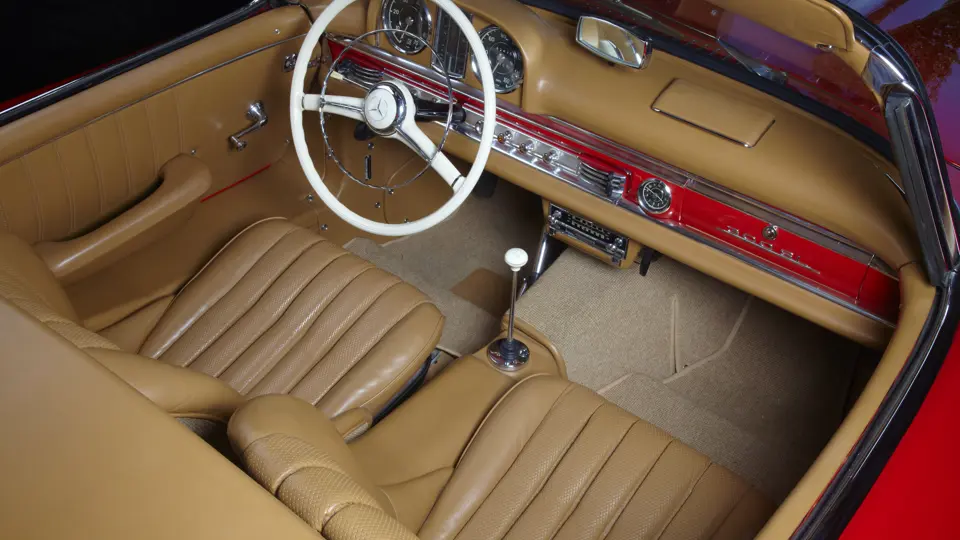

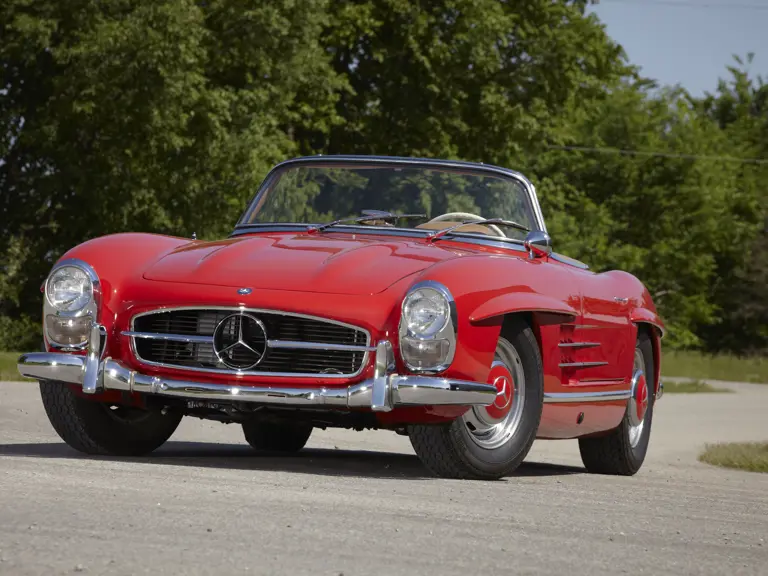
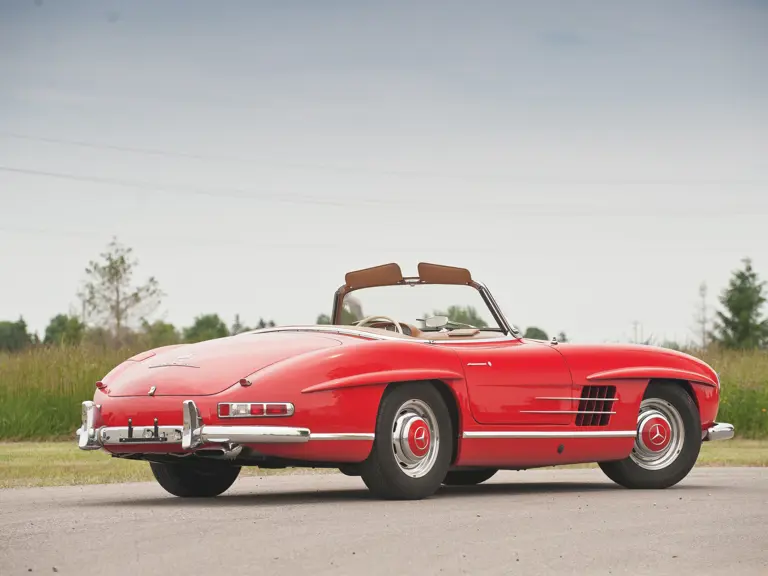
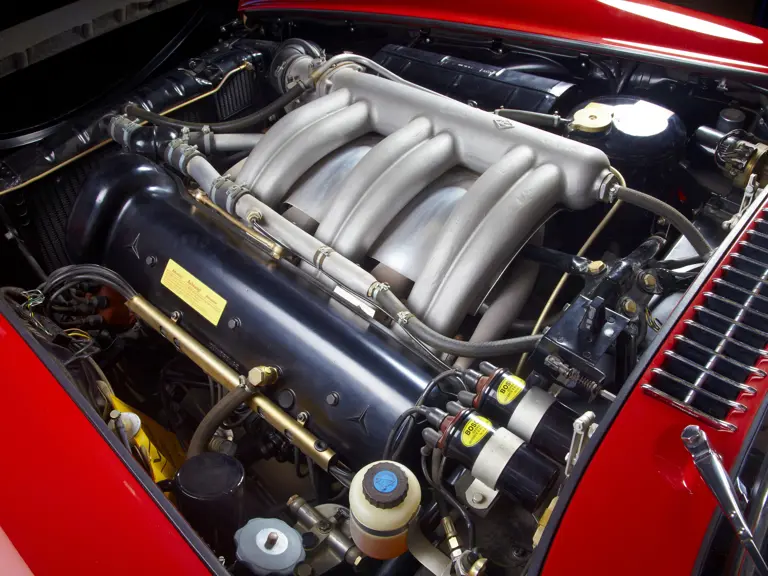
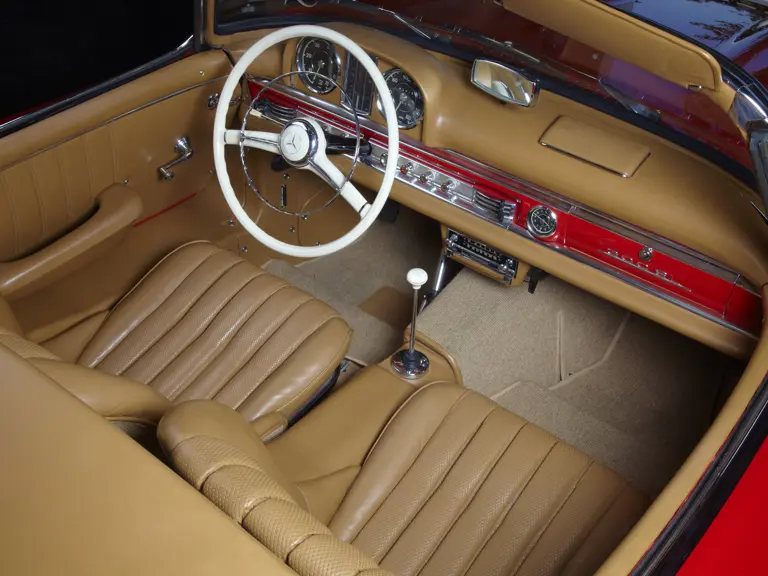
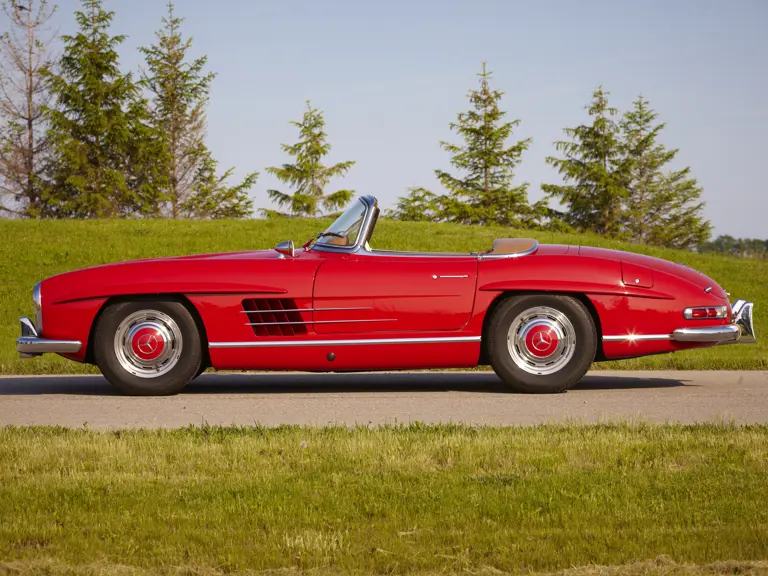
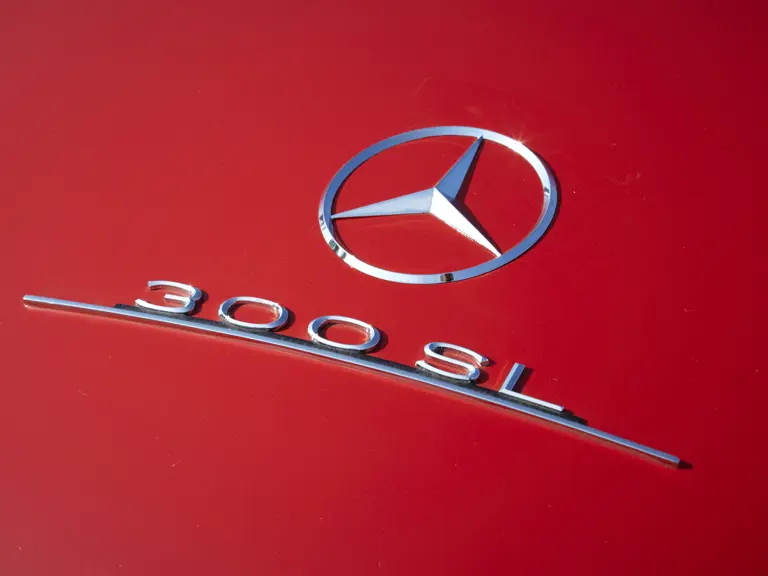
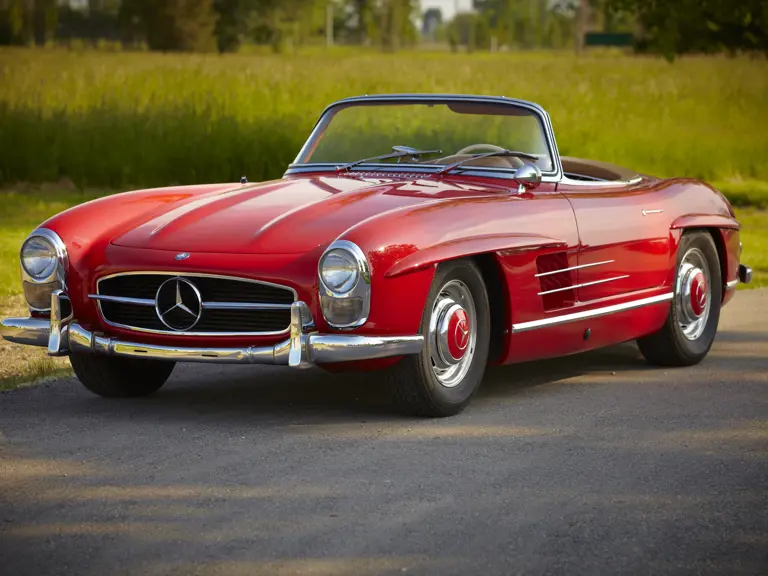
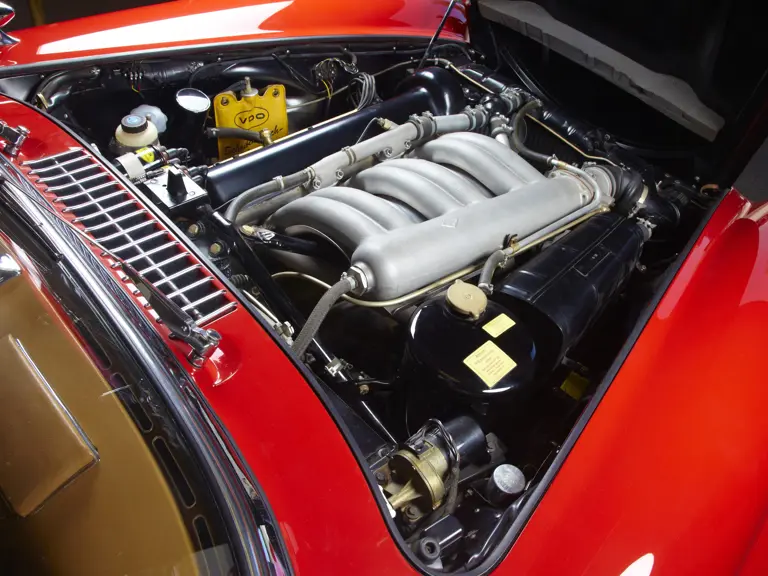
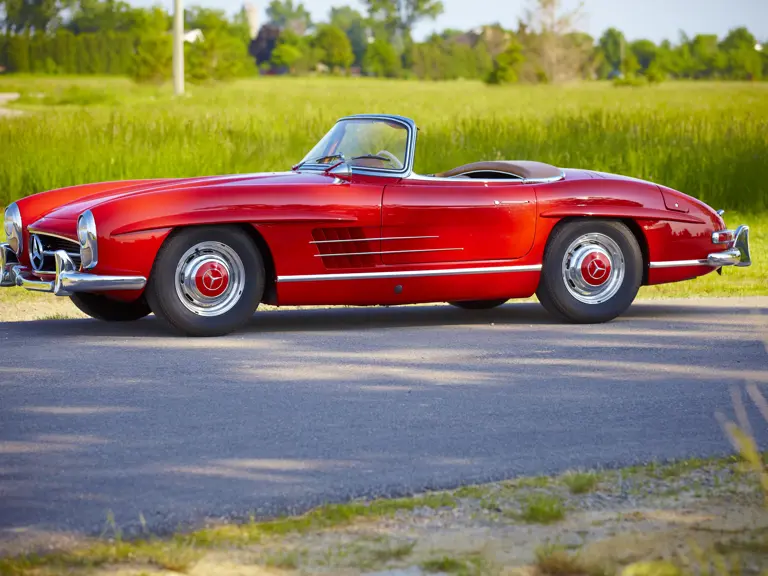
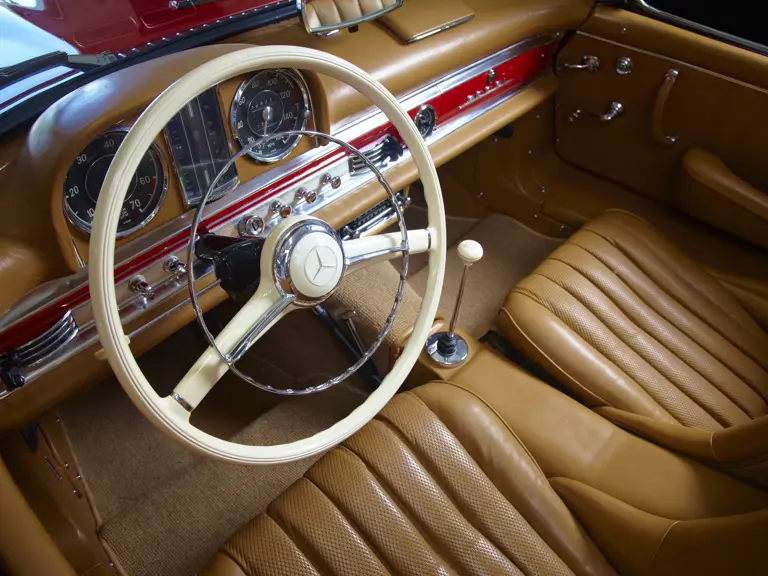
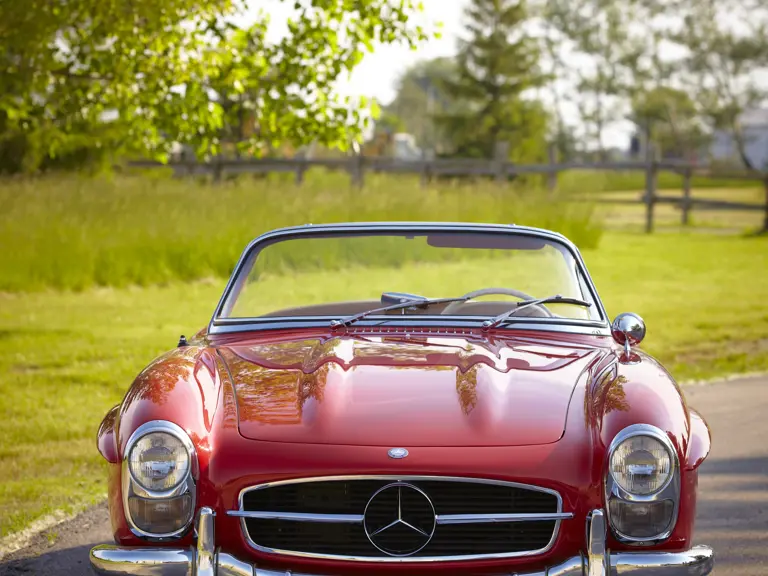


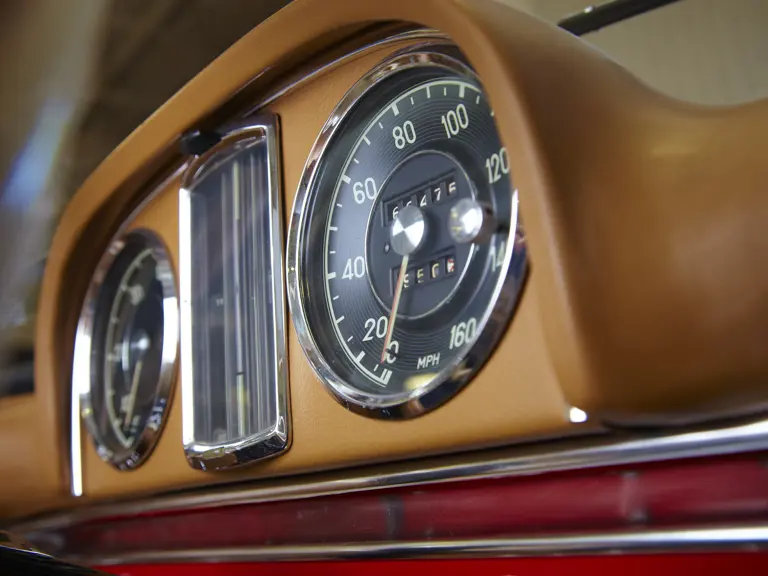
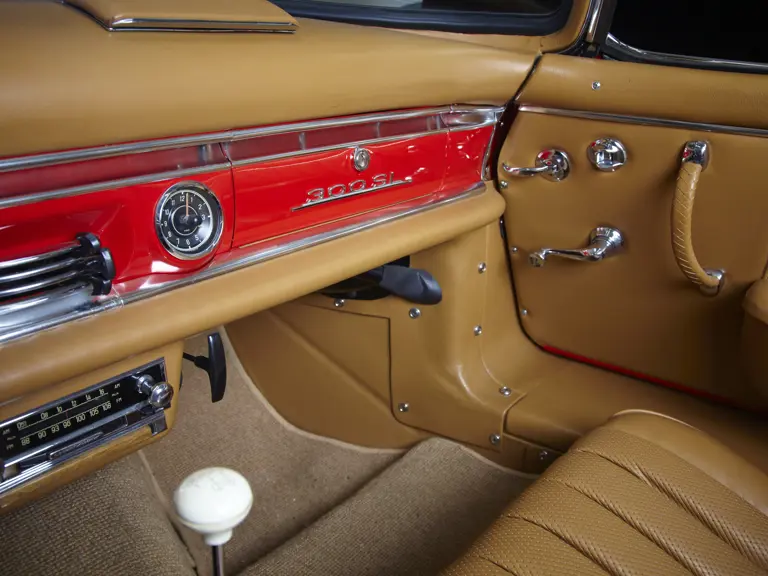
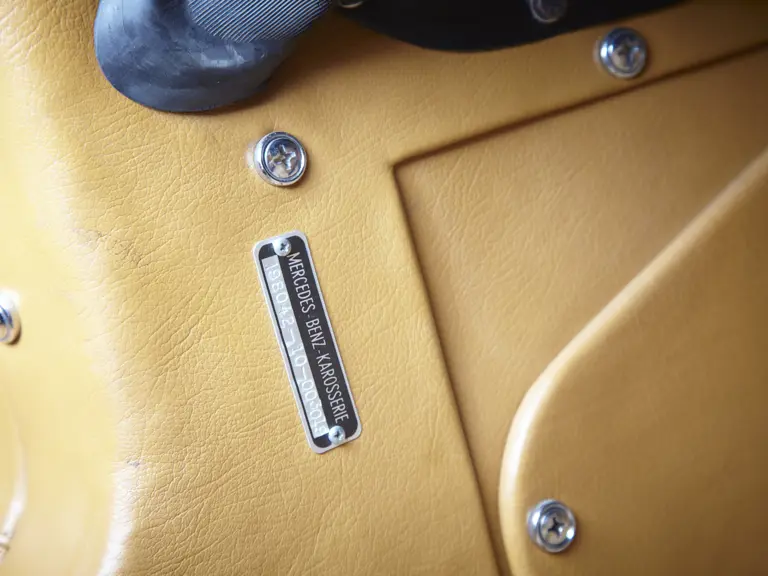
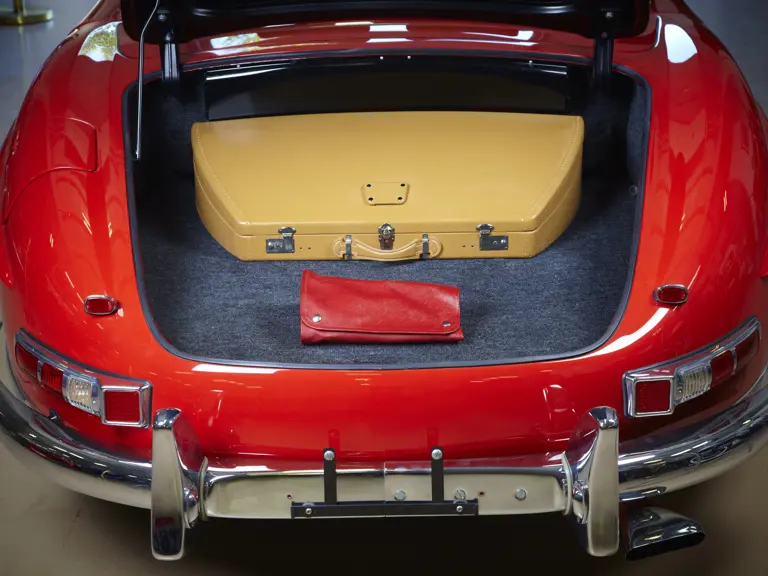

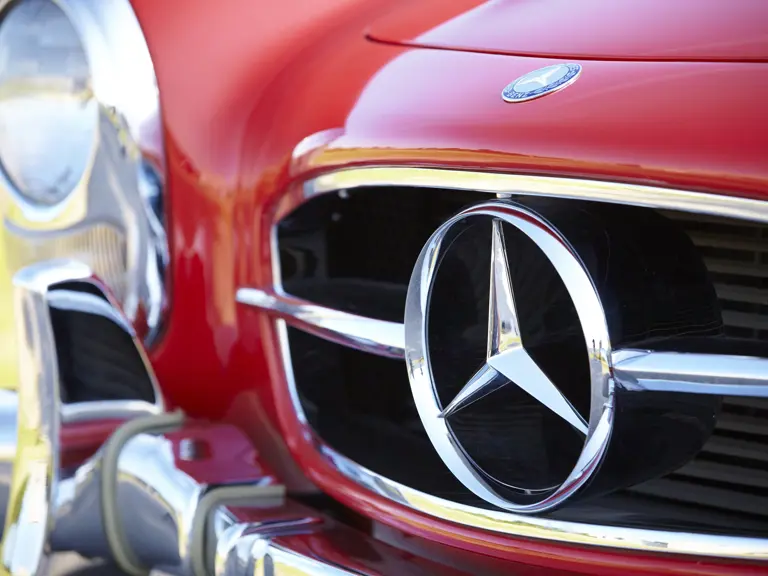

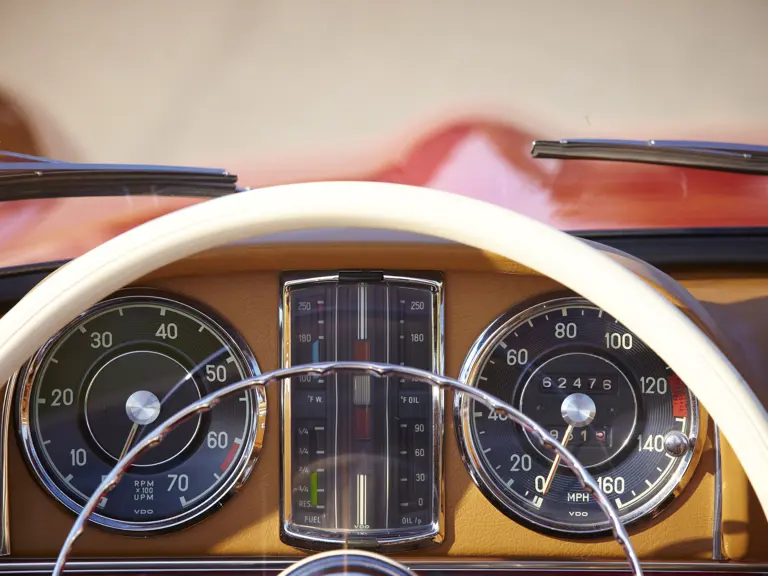
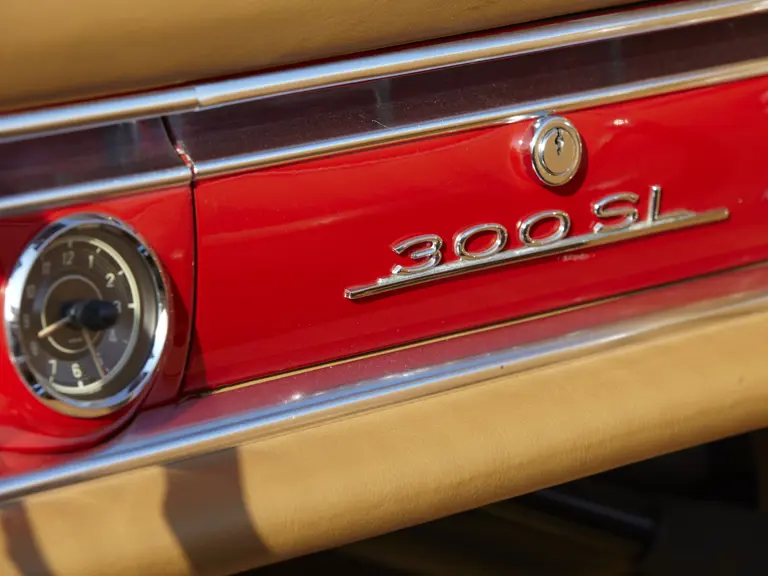
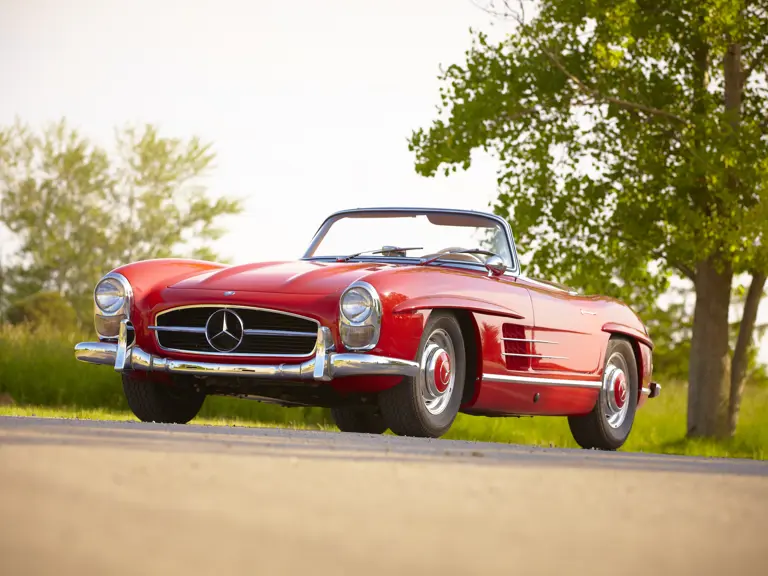
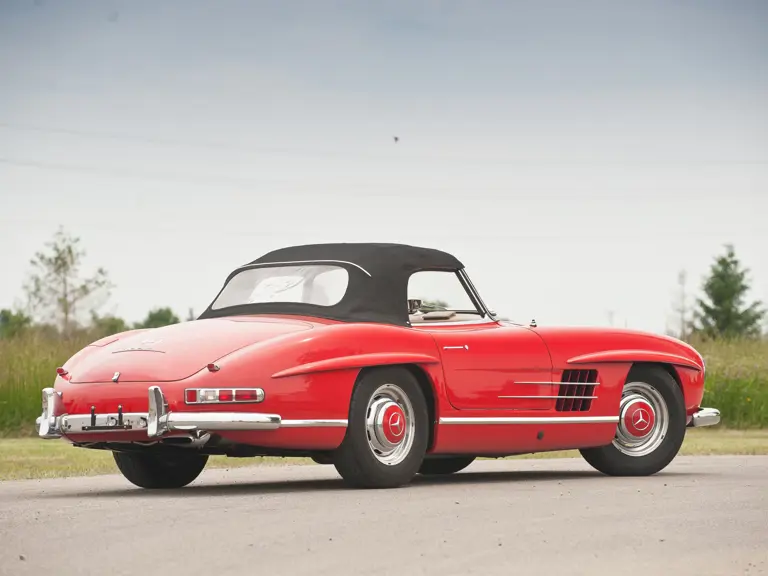
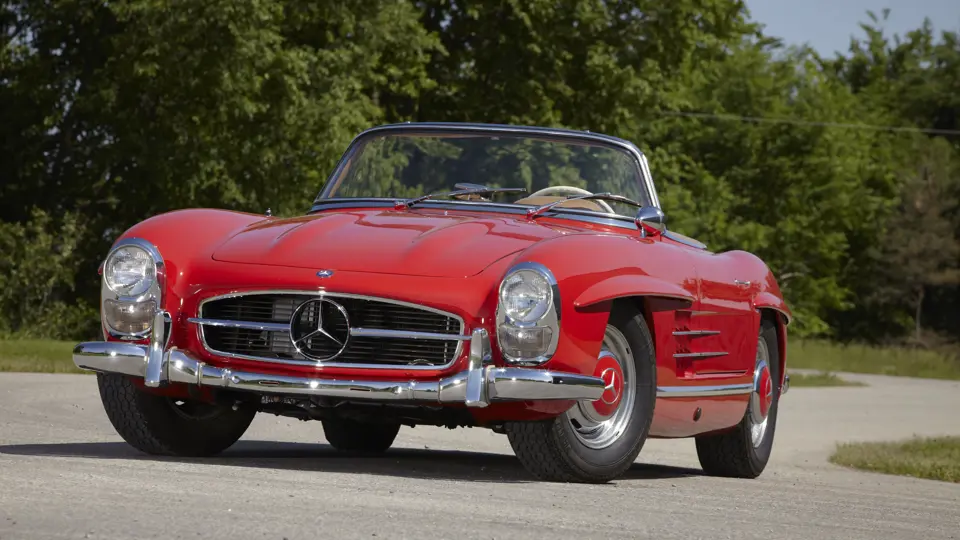
 | Monterey, California
| Monterey, California
